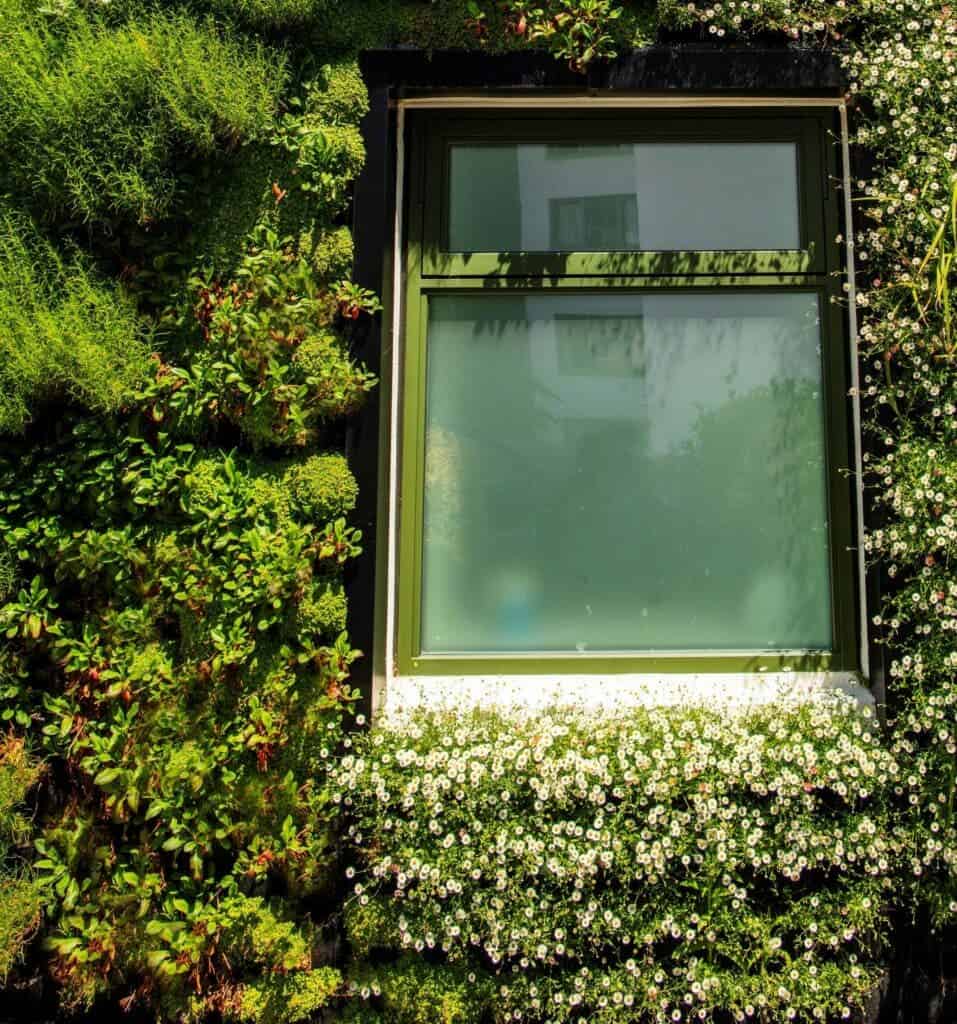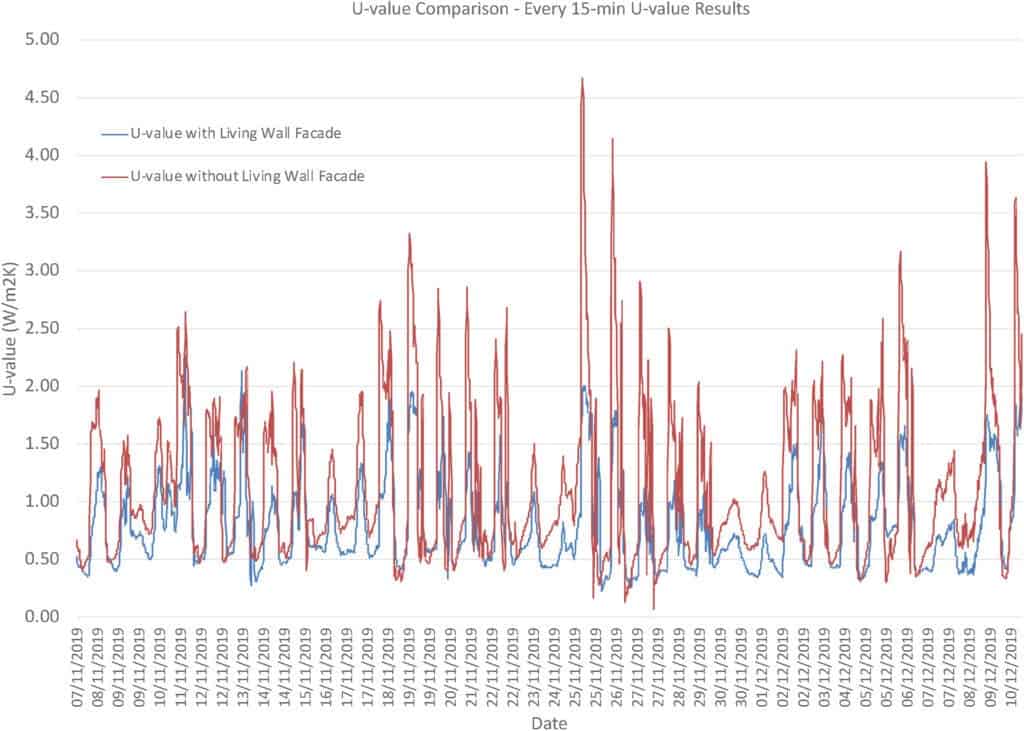Plants can help keep buildings warm in the winter, and cool in summer, according to new research. The trick is to plaster walls in them.

Retrofitting cavity walls (double masonry walls with an air gap in between) with green or living walls goes a long way to reducing heating bills, according to new research. Such an improvement can slash the amount of heat a structure loses by over one-third (30%), the authors report.
The study was conducted at the University of Plymouth campus on its Sustainability Hub, a pre-1970 building. While the findings have practical applications for individual users, wide-scale adoption of such measures would also bring a significant and positive contribution to our efforts to combat the climate crisis.
Green for warmth
“Within England, approximately 57% of all buildings were built before 1964. While regulations have changed more recently to improve the thermal performance of new constructions, it is our existing buildings that require the most energy to heat and are a significant contributor to carbon emissions,” says Dr. Matthew Fox, a researcher in sustainable architecture and the study’s lead author.
“It is therefore essential that we begin to improve the thermal performance of these existing buildings, if the UK is to reach its target of net zero carbon emission by 2050, and help to reduce the likelihood of fuel poverty from rising energy prices.”
The study compared the insulating properties of two sections of the building’s walls with green walls providing extra insulation, using uncovered walls as a control. The green wall consisted of a flexible felt fabric sheet with a system of pockets to hold soil, in which various species of plants were planted. These included sedges, ferns, rushes, and flowering shrubs. The living wall was fitted to the exterior of the masonry wall. Due to the internal layout of the building, only one of the green-walled areas was monitored, as per the diagram below.
The performance of these two wall sections was monitored over a five-week period. By the end, the authors report, the one with the living wall facade showed a 31.4% reduction in lost heat compared to its bare counterpart.
Apart from better heat retention, the living wall also improved the thermal stability of the structure. Daytime temperatures in the two green-walled sections of the building fluctuated less than in the uninsulated ones — meaning it was easier for the buildings’ heating systems to maintain the desired temperature range.


They also discovered daytime temperatures within the newly-covered section remained more stable than the area with exposed masonry, meaning less energy was required to heat it.
Building energy use directly accounts for 17% of the greenhouse gas emissions in the UK, the authors explain. Heating alone makes up over 60% of all the energy usage in buildings, so green walls could put a significant dent in a country’s emissions if employed on a wide scale. They can also bring other benefits to the table, such as offering a way to increase biodiversity in city environments, which they sorely lack. They also provide a modest but important contribution to air filtration in cityscapes, help with our mental health, and keep temperatures in cities bearable.
On a personal note, I also find green walls to look quite cool.
This study is one of the first to look at the merits of living walls as insulation systems in temperate climates, the team adds, giving us reliable data on their effectiveness. Such data can serve both private and public actors such as homeowners, corporations, and policy-makers when deciding on what insulation systems to apply to buildings.
“With an expanding urban population, ‘green infrastructure’ is a potential nature-based solution which provides an opportunity to tackle climate change, air pollution and biodiversity loss, whilst facilitating low carbon economic growth,” adds Dr. Thomas Murphy, one of the study’s authors.
“Living walls can offer improved air quality, noise reduction and elevated health and well-being. Our research suggests living walls can also provide significant energy savings to help reduce the carbon footprint of existing buildings. Further optimizing these living wall systems, however, is now needed to help maximize the environmental benefits and reduce some of the sustainability costs.”
The paper “Living wall systems for improved thermal performance of existing buildings” has been published in the journal Building and Environment.






